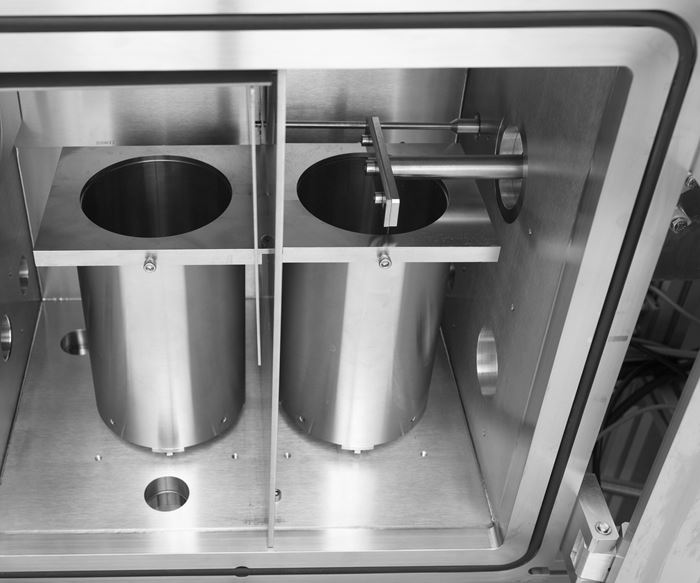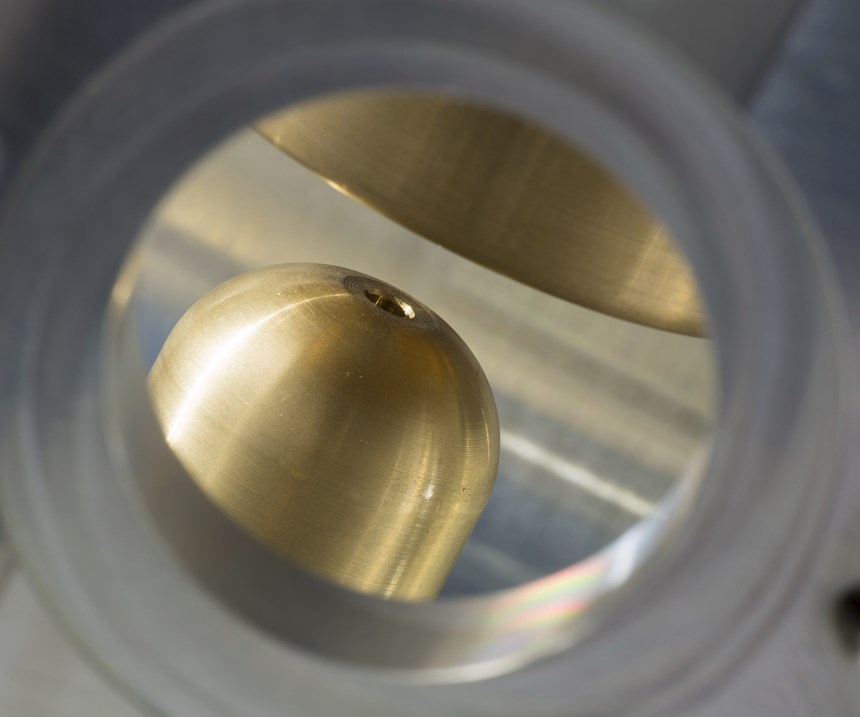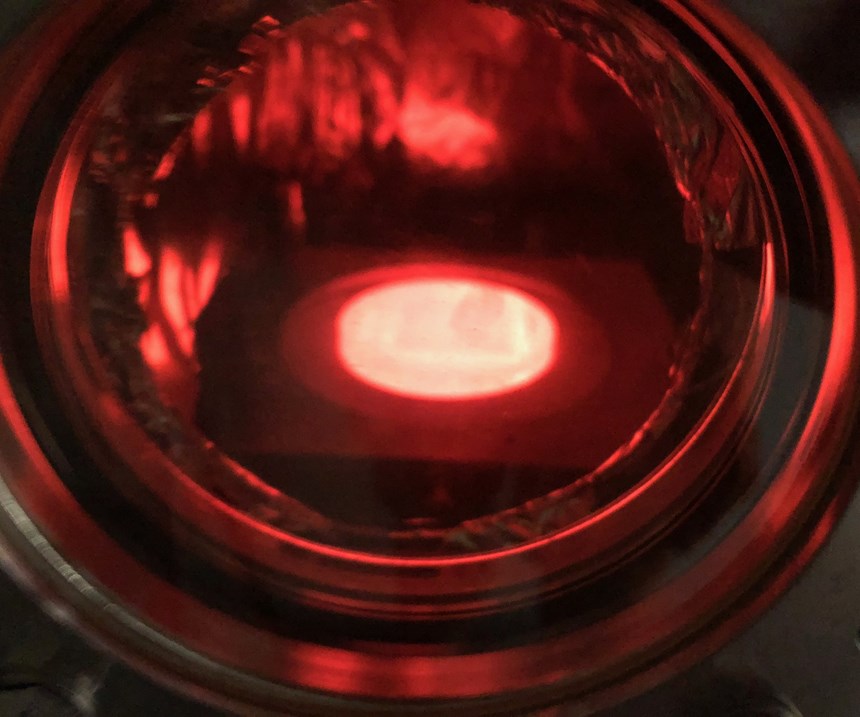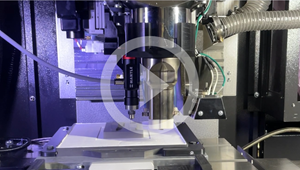Freemelt Offers an Open-Source Toolbox for Material Development
Swedish startup Freemelt believes collaboration will be a way forward for metal additive manufacturing. Its Freemelt One electron beam melting system for R&D supports this open-source philosophy.
Where does the future of additive manufacturing (AM) lie? For Freemelt, the future of AM is in materials, an area of innovation that will drive future applications for the technology. But getting to that future also requires something else: collaboration.
“Even though metal 3D printing has been successful, we think it can be even more successful because we have only scratched the surface when it comes to materials,” says Patrik Ohldin, managing director of the company. “AM needs tools that support the development of materials. It was obvious to us that a ‘toolbox’ suitable for this was needed, but that no such equipment was available.”
Freemelt therefore has developed a “toolbox” for this purpose—the Freemelt One, an electron beam melting (EBM) system that is designed specifically for materials R&D. This machine, Ohldin says, is a manifestation of the company’s philosophy that combines hardware and software capabilities with open-source parameters and support for collaboration. Freemelt sees all of these as critical to the advance of additive manufacturing.
An R&D Toolbox
Based in Sweden, Freemelt is a startup company just over one year old. However, its founders together have more than 50 years’ experience in additive manufacturing, most of it with Arcam, the EBM equipment supplier now part of GE. Ohldin himself spent 12 years in sales with Arcam. Having deep familiarity with the EBM process, Freemelt’s founders had no doubts about the capabilities or promise of the technology; the gap that they saw, instead, was a limited material selection for the process and no good tools for proving out new ones.
Thus, they created the Freemelt One. Where the build volumes of production systems have increasingly expanded, allowing for larger parts or greater numbers in a single batch, the goal in R&D work is rather to perform many short builds in a systematic and efficient way, Ohldin says. To support this goal, the Freemelt One has a small build envelope, just large enough to manufacture test coupons and tensile bars. The company’s motto is “All you need is a cup”—meaning all that is necessary to fill its machine is a (metric) cup of metal powder. New powders are often expensive, so a small build volume enables affordable as well as fast testing. As an added benefit, the printer’s compact build envelope makes the manual cleaning process faster when changing between materials.
The machine is also powerful enough to support experimentation with a range of materials, offering a 6-kW electron beam and supporting operating temperatures as high as 1,200°C. Fully open machine architecture and software enables users to modify parameters such as electron beam spot size, layer thickness and more, all without restriction. The printer accommodates auxiliary equipment for R&D such as spectrometers, cameras and temperature measuring systems via its built-in ports, thereby maintaining the vacuum environment inside the build chamber. “Finding out what’s going on inside your process is key to determine whether it works or not, and why,” Ohldin says. The goal is for users to determine whether a given material will work for EBM, and when it does, to develop the process parameters that will achieve the desired properties.
Enabling Collaboration
The first Freemelt One system is expected to be delivered by early 2019. Although universities and research institutes will likely make up a significant portion of users, the company also anticipates the 3D printer being used by powder manufacturers and large industrial companies performing their own internal materials research.
What discoveries might these users make? Ohldin sees several particularly promising opportunities for electron beam melting materials in the near future. One is nonweldable, crack-prone materials that could be beneficial for high-temperature applications such as aerospace engines. Another is refractory materials that require high processing temperatures. He also notes an increasing interest from additive manufacturers in copper—a material that offers high conductivity and good thermal transfer, but is very reactive to oxygen. The vacuum build chamber of the Freemelt One offers a clean, productive environment to experiment with this reactive material.
“We can’t do it ourselves… More hands, more minds—that is the future.”
The material advances that may come with this system are largely up to customers, but Freemelt is encouraging an open-source environment around its equipment, seeing mass collaboration as key to driving metal AM forward. Customers will have the ability to opt-in to a community of fellow users to share experiences and insights. How much these community members choose to share is up to them, but the company sees collaboration and cooperation as key to accelerating materials development for additive manufacturing.
“Many times when it comes to materials, the users know more than we do,” Ohldin says. “We can’t do it ourselves. That is why we have this open-source strategy. More hands, more minds—that is the future.”
Related Content
3D Printing Molds With Metal Paste: The Mantle Process Explained (Video)
Metal paste is the starting point for a process using 3D printing, CNC shaping and sintering to deliver precise H13 or P20 steel tooling for plastics injection molding. Peter Zelinski talks through the steps of the process in this video filmed with Mantle equipment.
Read MoreAM 101: What Is Binder Jetting? (Includes Video)
Binder jetting requires no support structures, is accurate and repeatable, and is said to eliminate dimensional distortion problems common in some high-heat 3D technologies. Here is a look at how binder jetting works and its benefits for additive manufacturing.
Read MoreAM 101: NanoParticle Jetting (NPJ)
The proprietary process from XJet builds ceramic and metal parts using nanoparticle suspensions. Learn how NPJ works in this introductory article, part of our AM 101 series.
Read MoreWhat is Powder Bed Fusion 3D Printing?
Whether in metal or polymer, with a laser or an electron beam, powder bed fusion (PBF) is one of the most widely used 3D printing techniques.
Read MoreRead Next
3D Printing Brings Sustainability, Accessibility to Glass Manufacturing
Australian startup Maple Glass Printing has developed a process for extruding glass into artwork, lab implements and architectural elements. Along the way, the company has also found more efficient ways of recycling this material.
Read MoreGE Additive Rebrands as Colibrium Additive
As part of the brand name transition, both the Concept Laser and Arcam EBM legacy brands will be retired.
Read MoreTo Improve Performance of Compression Molded Composites, Add 3D Printed Preforms
9T Labs' Additive Fusion Technology enables the manufacture of composite structures with as much or as little reinforcement as is necessary, using 3D printed continuous fiber preforms to add strength just where needed.
Read More
.jpg;width=70;height=70;mode=crop)














.png;maxWidth=300;quality=90)










